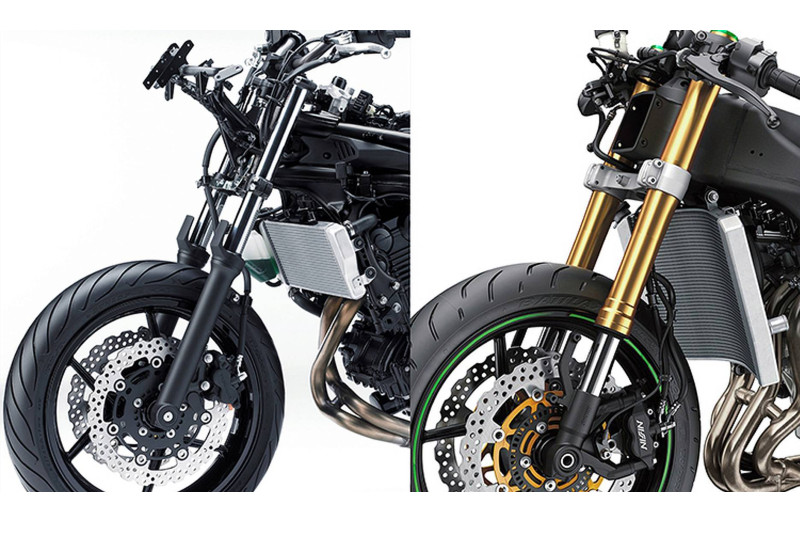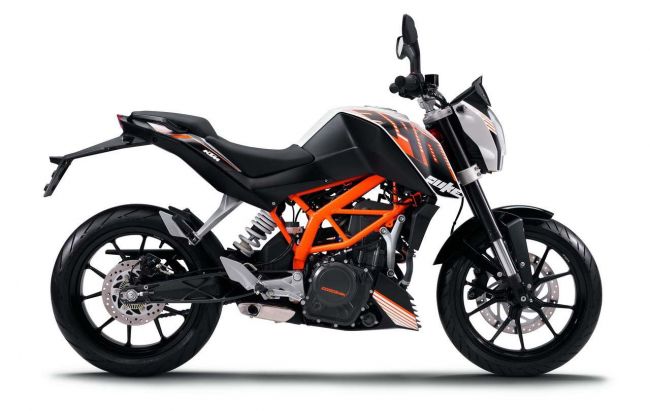Upside-Down Fork vs. Telescopic Fork on Motorcycles | Advantages and Disadvantages

Motorcycle design has evolved significantly over the years, particularly in the realm of front suspension systems. Two primary configurations, the conventional front suspension and the upside-down (USD) front suspension, stand out. Both setups have distinct characteristics, impacting the ride, handling, and overall performance of a motorcycle. In this article, we’ll delve into the differences, advantages, and drawbacks of these two suspension types to help riders make informed choices.
1. Understanding the Conventional Front Motorcycle Suspension:
The conventional front suspension, also known as right-side up forks, features the fork tubes placed atop the sliders. This traditional layout has been the standard for decades. It offers reliability, simplicity, and ease of maintenance, making it a popular choice for many motorcycle manufacturers.

Honda CB 200X with conventional Right side up forks.
Advantages:
• Cost-effective manufacturing process.
• Generally lighter in weight compared to upside-down forks.
• Easier to service and repair due to its simpler design.
Disadvantages:
• Susceptible to flex under heavy braking, affecting handling.
• Less resistance to torsional forces, impacting rigidity.
2. Exploring Upside-Down (USD) Front Suspension:
The upside-down front suspension flips the conventional design by placing the larger diameter tubes at the top, bolted to the triple clamps, while the smaller tubes are at the bottom attached to the wheel hub. This design alteration offers several performance-oriented benefits.

KTM 390 Duke with Upside-down Forks.
Advantages:
• Improved rigidity and reduced flex during braking, enhancing stability and control.
• Reduced unsprung weight due to larger diameter tubes, contributing to better handling.
• Enhanced responsiveness and feedback due to decreased stiction and improved damping characteristics.
• Greater strength and durability, especially for aggressive riding or off-road conditions.
Disadvantages:
• Generally more expensive to manufacture.
• Complex design might require specialized maintenance.
3. Performance Comparison:
In terms of performance, upside-down front suspension tends to outshine conventional setups, especially in demanding riding conditions. The inverted design’s ability to minimize flex, reduce unsprung weight, and enhance rigidity significantly impacts the motorcycle’s handling, particularly during high-speed cornering and aggressive braking.
Conversely, while conventional suspensions offer reliability and ease of maintenance, they may exhibit limitations in providing the same level of performance under extreme conditions.
4. Practical Applications:
Manufacturers often choose suspension configurations based on the intended use of the motorcycle. Sportbikes and high-performance machines frequently opt for USD forks due to their superior handling characteristics. On the other hand, touring or commuter motorcycles might favor conventional setups for their reliability and lower cost.
Which is better for Dubai’s climate

In a climate like Dubai’s, where sandy conditions might be prevalent, the upside-down (USD) front suspension could be more beneficial for motorcycles.
USD forks typically offer better durability and performance in sandy or off-road conditions due to their design’s improved strength, reduced flex, and enhanced rigidity. This configuration provides better resistance to the lateral forces caused by sand and uneven terrains, offering more stability and control.
However, it’s also essential to consider other factors like maintenance, cost, and the specific motorcycle’s intended use in Dubai’s climate before making a final decision. Routine maintenance and proper care are crucial regardless of the suspension type to ensure optimal performance, especially in sandy environments.
5. Conclusion:
In the realm of motorcycle front suspension, the choice between conventional and upside-down configurations hinges on a rider’s preferences, riding style, and intended use of the bike. While conventional forks remain reliable and cost-effective, upside-down suspensions have gained popularity for their superior performance attributes.
Ultimately, whether it’s the simplicity and familiarity of conventional forks or the enhanced handling and responsiveness of USD setups, understanding the nuances of these two suspension types empowers riders to make informed decisions when selecting a motorcycle that aligns with their riding needs and preferences.
